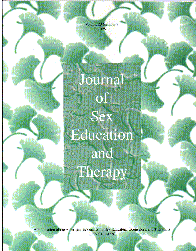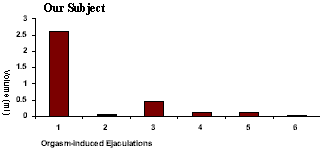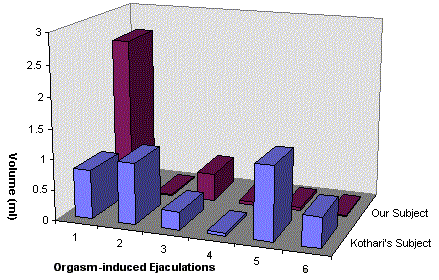|
|
 |
|

The Unprecedented Research Study from Rutgers University
|
| The Published Study |
| |
|
"Male Multiple Ejaculatory Orgasms: A Case Study"
Journal of Sex Education and Therapy
Volume 23, Number 2
(C) Copyright 1998
Rutgers Research Investigators*:
Dr. Beverly Whipple
Vice-President (2001- 2005)
World Association for Sexology
Past President
AASECT
(American Association of Sex Educators,
Counselors, and Therapists)
President, Scientific Committee
15th World Congress of Sexology
Dr. Barry Komisaruk
Professor of Neurobiology, Rutgers University
*Neither Rutgers University or the Investigators contribute to or
sponsor this website in any way.
Enjoy some of the highlights from this
one-of-a-kind research study
While due to copyright considerations the study itself cannot be made available at this site, here follows a small sampling of key quotes from this remarkable study.dy is best viewed using the FREE, downloadable
To view an Overview of the study, click here. , to view the Study online in web graphics format, simply click here
|
 |
| |
|
|
| |
| Study Highlights (excerpted from the published study: JSET, Vol. 23, No. 2; pp. 157-162; 1998) |
|
The Study Results

Click to view
|
|
"This study documented, in a laboratory setting, the reported occurrence of male multiple ejaculatory orgasms without any attempt to inhibit ejaculations."
(Page 157 - emphasis added)
"During the testing, the participant experienced six orgasms with six ejaculations with an interval of 36 minutes between the first and last orgasm. He maintained an erection during the entire experimental period as reported by the participant and observed by the investigators."
(Page 159)
|
Ejaculate Volumes per Orgasm

|
|
"During the debriefing, the participant reported that he felt some self-consciousness about being observed, but he was eventually able to disregard the laboratory setting during the experiment. He was aware of not experiencing two orgasms because of the distraction occasioned by the reporting procedures and attached instrumentation... The participant confirmed that by contrast with his usual experience, his orgasms did not become more intense, and he rated the intensity of his orgasms in the laboratory as 50% to 70% of what he usually experiences... The participant reported that he ended the experiment only because the room had become too hot and stuffy to continue. Climate control had been inoperative during the experiment."
(Page 160, - emphasis added)
"These findings provide evidence of the occurence in one man of multiple orgasms with concurrent uninihibited multiple ejaculations."
(Page 161)
|
|
Ejaculate Volume Comparison - Kothari & Rutgers Study

|
|
"Thus, the difference between the participant of the present study and the participant in Kothari's study is that, in the present study, no attempt was made by the participant to inhibit ejaculation. Because the intervals were similar in Kothari's study and the present study, and in the present study no attempt was made to inhibit ejaculation, the question is raised as to what process is necessary to activate the relatively prolonged refractory period that is typically reported in ejaculatory orgasms... "
"Further research concerning the refractory period is needed, but is beyond the scope of this case study."
(Page 162 - emphasis added)
|
It is hoped that, with the right sponsorship, such research into the Male Refractory Period might someday be undertaken.
|
| |
� Copyright 1998 - 2018 MMOR Research, LLC All Rights Reserved
|
|
|

